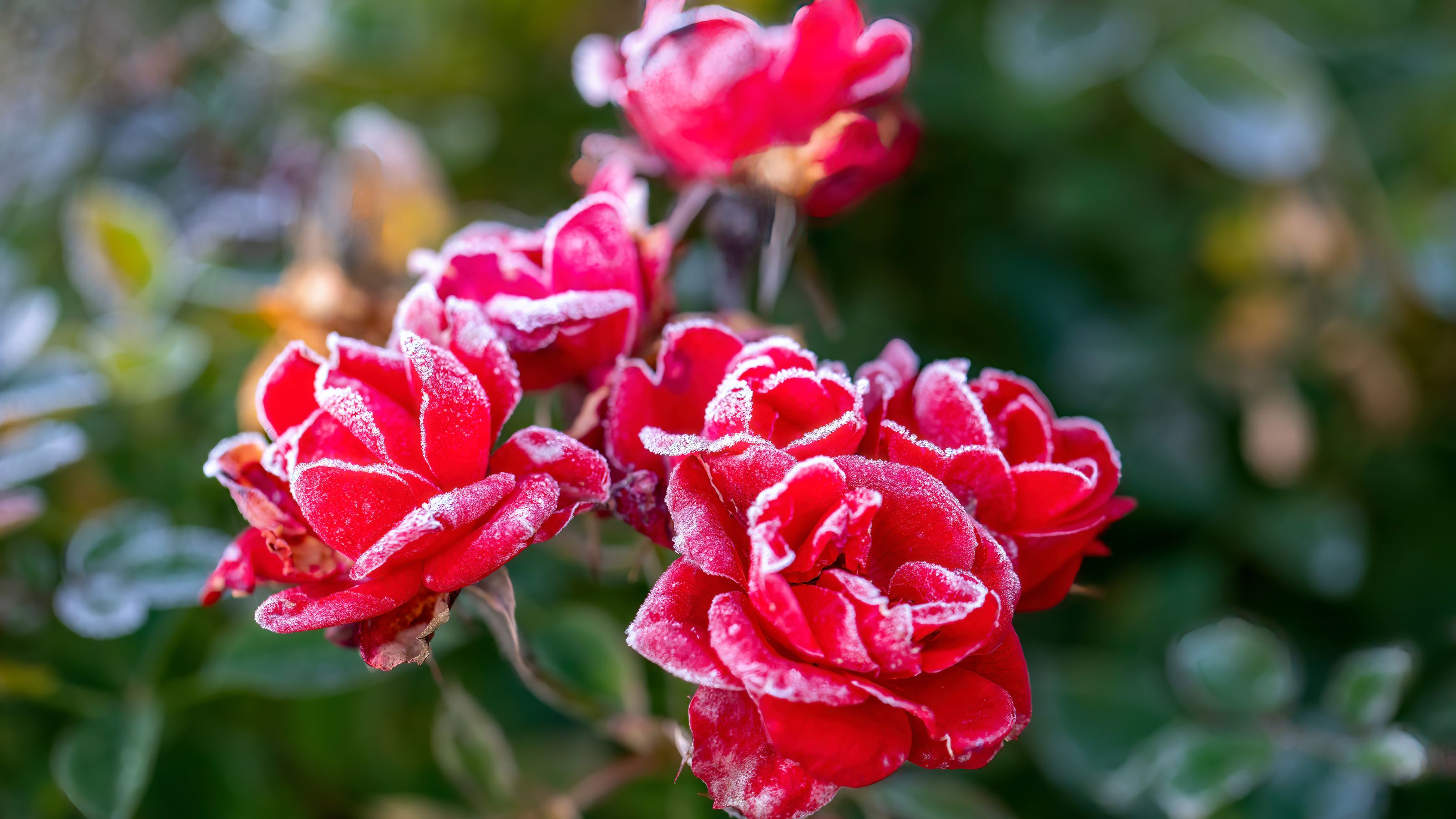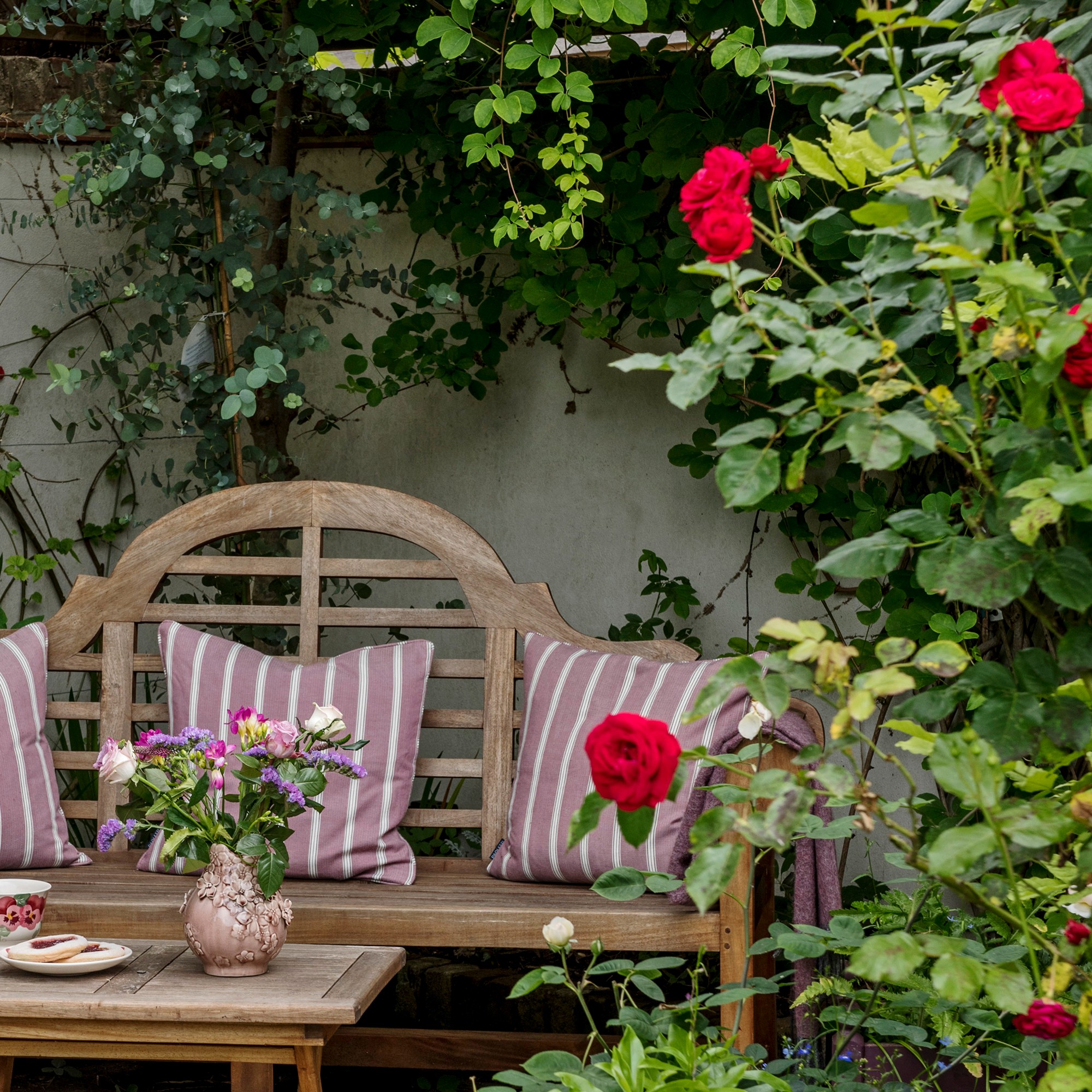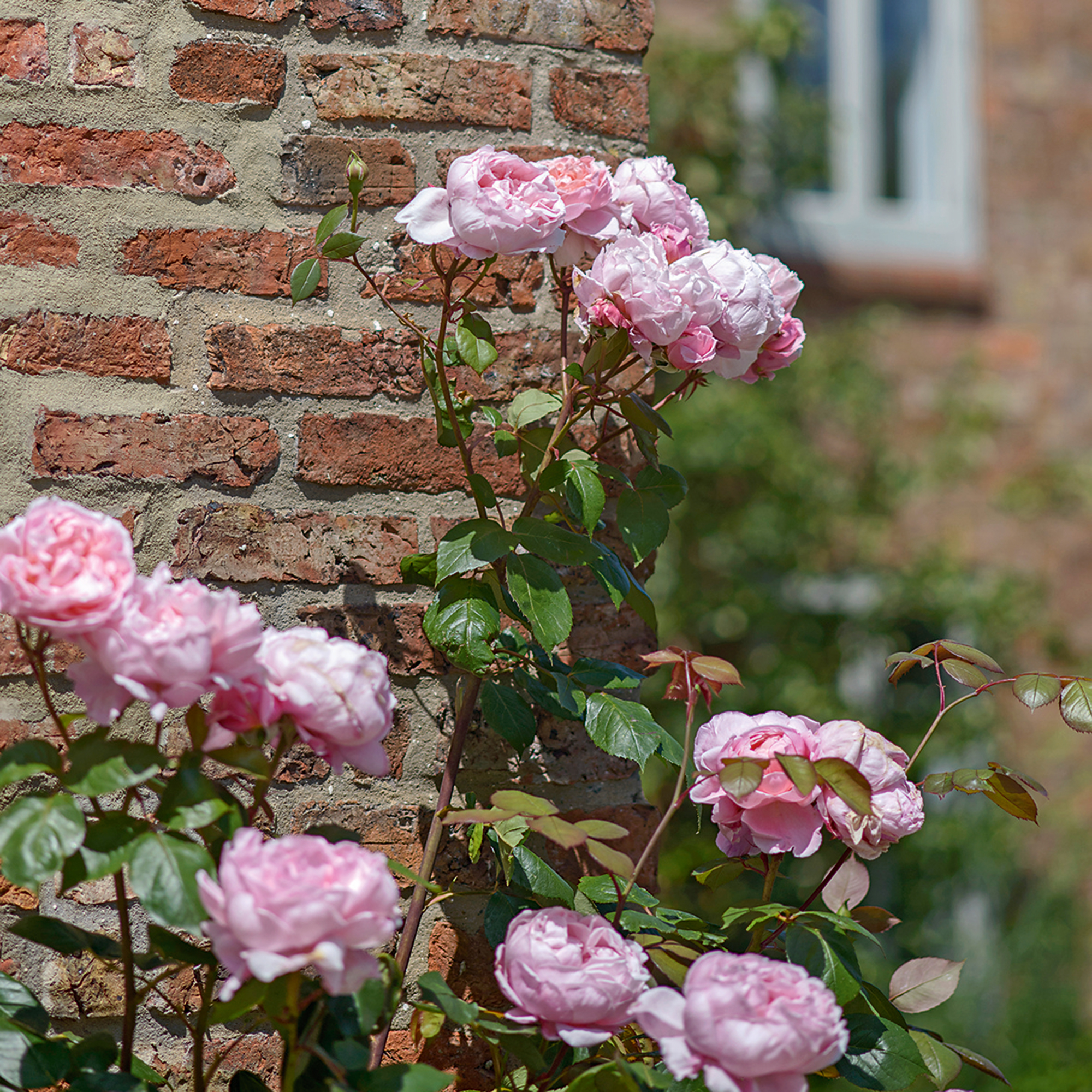How to grow bare root roses - the secret experts use to add these beautiful blooms to a garden on a budget
Fancy a garden filled with roses, but lacking the funds to do so? Try investing in bare root roses...


They say every roses has its thorn – and, for many, it's that eyewatering price tag. Thankfully, there is a way to fill your garden with these elegant blooms without it costing the earth: by opting for bare root roses.
That's right; learning how to grow roses is a must for anyone who dreams of filling their outdoor space with cottage garden ideas. While you could run around the garden centre looking for perfect potted specimens, though, you're far better off sourcing bare-root plants.
Why? Well, as mentioned already, it's a purse-friendly solution to all your rose garden dreams – but bare-root roses are also perfect if you want to up your eco-credentials as they don't come packaged in plastic pots. Win!
'Planting bare root roses is a great way to start growing roses, at a much lower cost than buying potted roses plus they are planted over the cooler months of the year, meaning you can get some winter gardening done,' says Morris Hankinson, director of Hopes Grove Nurseries.

Morris Hankinson is the founder and managing director of Hopes Grove Nurseries Ltd, the UK’s only specialist grower-retailer of hedging plants. He established the thriving business in 1992, shortly after graduating with a Commercial Horticulture Degree from Writtle College, Essex.
What you will need
The good thing about planting bare root roses is that you don't need lots to hand; in fact, Steven Bell, the CEO of Paving Shopper says you only really need 'a mix of garden soil, compost, and a touch of bone meal to encourage strong root growth'.

Steven Bell is the managing director of Paving Shopper, known for his expertise in gardening, landscaping and paving. He leads the company with a focus on quality and innovation, ensuring Paving Shopper remains a trusted source for diverse paving needs.
You'll also need a spade for digging that all-important hole, some mulching material, and (obviously) your bare root roses themselves.
Where to buy bare root roses:
Sign up to our newsletter for style inspiration, real homes, project and garden advice and shopping know-how
- Crocus: a stunning selection of bare root roses
- David Austin Roses: plenty of bare root roses to choose from
- Thompson & Morgan: so many bare root roses (but our favourite is the Rose 'Scented Double White')
'When choosing a rose, consider the type (shrub, hybrid tea, climbing, rambling etc) and think about what colour you would like as well. Fragrance can be considered as well from the well known traditional ‘Gertrude Jekyll’ to a sweet and spicy ‘Korresia’ – there are so many!' advises Morris.
Step-by-step guide
Now that you have everything you need to hand, here's how to grow bare root roses like a pro.
1. Time it right
According to Morris, the best time for bare root roses to be planted is during the dormant period (November to March) as long as the ground isn’t frozen or waterlogged.
'This will allow the plants to establish before they spring back to life when the weather warms up,' he says.
2. Prep your roses

Steven says that it’s good to start by soaking the roots for about 4-6 hours before planting.
'Think of it as giving them a drink before they’re ready to "wake up" in spring,' he says.
3. Location, location, location
While there are varieties suited to even those with a shady or north-facing garden, a good rule of thumb is that bare root roses (like all roses) should be planted in a sunny position and well drained soil.
'If you have heavy soil, improve the structure and drainage by incorporating some well rotted organic matter before planting,' says Morris.

4. Get digging
When digging your hole for your bare root roses, Steven says the aim is to create one that is 'twice as wide and deep as the root spread, as it allows the roots to comfortably expand'.
Aim for a hole that's about 40cm to 60cm wide, depending on the spread of the roots in question. Morris adds that you should make sure there is space around the plants for good air circulation which will help to reduce the risk of fungal diseases.
'In general, roses should be planted 60 to 90cm apart,' he advises, 'and be sure to apply some Rootgrow mycorrhizal fungi (available from Amazon) to help the rose thrive.'
5. Plant up your roses
Once your hole is dug, it's time to plant your bare root roses as quickly as you can; the new roots will grow and establish quickly in the warm soil, and the winter rains mean they wont need watering until at least early spring.
To do this, Morris says you should pace the bare root rose into the planting hole, ensuring the grafting union (the bulge) is about 3cm below the surface.
'Fill the hole with soil and firm in with a spade or your heel,' he says. 'Water the rose so the soil is moist. To help retain moisture, protect from cold weather and suppress weeds, mulching can also be helpful, along with using a rose collar (available from Amazon).'
'Adding a thick layer of mulch around the base helps retain moisture, keeps roots insulated, and starts that gradual nutrient release as it breaks down – giving the roses a head start come spring,' agrees Paving Shopper's Steven Bell.
6. Show them some TLC
Just as you need to learn how to prune roses (not to mention the deadheading mistakes to avoid), there are a few things you can do to ensure your bare root roses don't just survive the planting process, but that they thrive, too.
'During the first year of growth especially, water regularly especially in dry weather, aiming for moist soil but not waterlogged and water at the base,' says Morris.
'Feeding isn’t necessary until after the first season when a rose fertiliser can be used in spring and summer. Let the plants establish and grow in the first year before pruning and after this, prune in late winter or early spring, according to the type of rose you are growing.'
FAQs
When should you plant bare root roses?
If you're wondering when to plant bare root roses, the answer is simple; when they're dormant. 'Late autumn to early winter is prime time for bare-root roses,' says Paving Shopper's Steven Bell who notes that, as temperatures dip, the roses enter a dormant state.
'This makes them less susceptible to transplant shock,' he says. '"Bare-root roses establish best when they’ve got cool weather and moist soil to encourage their roots to settle in," is a mantra many rose enthusiasts follow!'
Should you soak bare root roses before planting?
'Ideally, bare root roses should be soaked in a bucket of water for a few hours before planting to make sure the roots are not dry when planting,' says Morris Hankinson of Hopes Grove Nurseries.
Are bare root roses any good?
Bare root roses don't look as pretty going into the ground as potted varieties do, but don't be fooled; they're a purse-friendly way to fill your garden with blooms, as they'll use the cool winter weather to establish their roots and get growing in earnest.
'Beautiful and fragrant roses are such a joy to grow and really rewarding when they flower and brighten up the garden, and bare root roses allow you to choose from so many varieties,' says Morris Hankinson of Hopes Grove Nurseries.

Now that you know how to grow bare root roses, all that's left to do is determine which stunning variety you want to introduce to your garden – and you'd best be quick about it, as you'll want to get them in the ground before November is over.
Happy planting...

Kayleigh Dray became Ideal Home’s Acting Content Editor in the spring of 2023, and is very excited to get to work. She joins the team after a decade-long career working as a journalist and editor across a number of leading lifestyle brands, both in-house and as a freelancer.